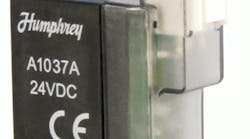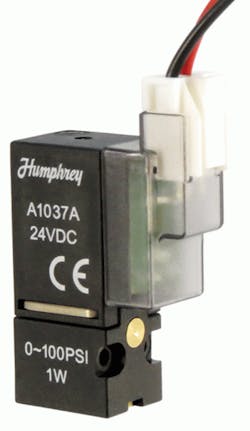The A10 and A15 Series pilot valves, configured as a three-port, subbase mount, feature low-power consumption and nonlocking manual override. The miniature direct-acting solenoid valves can be used as a pneumatic interface to link PCs and air-piloted pneumatic or process-control valves.
The 1.5-mm-wide A15 Series features Cv of 0.5, 2.5-W power consumption, comes in 12 and 24 Vdc, and available NO or NC to 100 psi.
The 10-mm-wide A10 Series has Cv of 0.01, features 1-W power consumption, comes in 12 and 24 Vdc, and is only available NC to 100 psi with a “plug-in” style electrical entry position with a 15-in. lead wire.
Humphrey Products, (800) 477-8707


